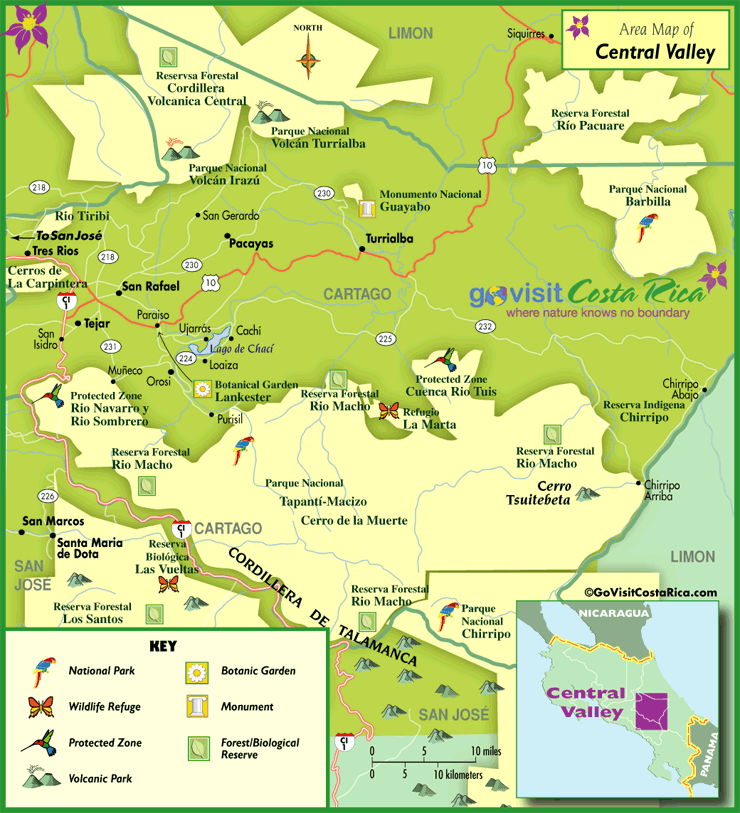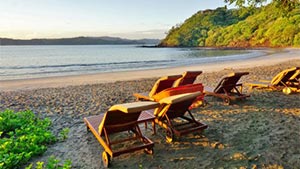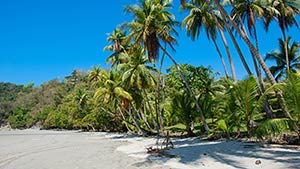Río Macho Forest Reserve, Cartago
In 1980, UNESCO declared the La Amistad Reserve a World Heritage Site near Cartago. This status means the United Nations recognizes the region as a landmark with significant interest for all humanity. Costa Rica and Panama cooperate to manage this area along the Talamanca Range.
The Rio Macho Forest Reserve is part of this region on the Costa Rican side. It shares a border with the Tapantí National Park. It is the largest biological reserve in the country and encompasses an area of 84,592 hectares. The government manages most of the region, but private owners control about 30% of the land.
This reserve put a stop to rapid deforestation that has damaged Costa Rica’s natural resources over the last few decades. It protects endangered species and habitats, and it is an essential part of Costa Rica’s cultural heritage. Iconic animals roam freely through the region and locals depend on the area’s rivers for water and agriculture.
Experience Rare Flora and Fauna
The ecosystem is primarily a rain forest situated along varying degrees of altitude between 2000 and 3000 meters. Foliage covers the land across the mountain range and provides shelter for an immense variety of exotic wildlife like pumas, tapirs, ocelots and endangered jaguars, reptiles like caimans, lizards, pit vipers and palm viper. Also some tropical bird species such as quetzals, blue and white swallows, flycatchers and finches.
Some of the rare species of birds found only in the reserve. Birdwatching is one of the leading draws for tourists. If you are interested, hire a guide to help you spot the most endangered or interesting species.
The quetzal is a beautiful red and green bird with long plumage famous throughout all of Costa Rica. They nest in the reserve and mating season lasts from February through July. These months are the best time to witness these birds at the height of activity.
Rainbow trout fill the rivers and streams. A healthy stock of fish is critical, but some fishing is allowed with permits. Scout out a quiet spot along the shores to cast your line.
Stay Overnight in the Reserve
It’s possible to camp in the forest, but you must bring your own equipment and provisions. The region is left mostly undeveloped, and services are limited. Be prepared to fend for your own needs during your stay.
Day hikes are also popular. There are several trails through the forest, but be careful. Even experienced hikers may become disoriented when traveling too far from recognizable landmarks. Avoid getting lost by staying on familiar paths.
You can hire a guide to take you into these uninhabited areas. Local experts know the best places to spot the wildlife you are interested in seeing. They also help you avoid hazards and make your trip successful.
Planning Your Trip
There are no facilities in the preserve. You must bring your own equipment and supplies. Pack plenty of food and water and dress appropriately. Wear comfortable hiking boots and layer clothing for the weather.
Map of the Area

Although the dry season begins in January and lasts until April, rain is possible all year round. Be prepared for wet conditions. The average rainfall is 2000 mm per year with most of the heavy rains arriving between May and December. At higher elevations clouds fog over the terrain leaving everything damp and chilly.
It takes roughly two hours to drive to the preserve from San José. Take the road to Cartago and exit at the turn for Cerro de la Muerte. Follow the Inter American Highway to Villa Mills and turn left onto an unpaved road toward Alto de Jaguar. The roads are passable, but be ready for unpaved surfaces. Make sure your tires are correctly inflated and carry enough fuel for your return drive.
7 Days / 6 Nights
Starting at $978 per person
10 Days / 9 Nights
Starting at $1,440 per person










.jpg)






